Bentwood Box Item Number: Nb3.1481 a-b from the MOA: University of British Columbia
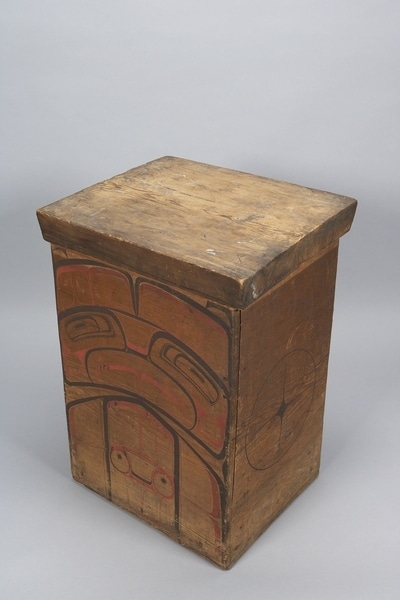
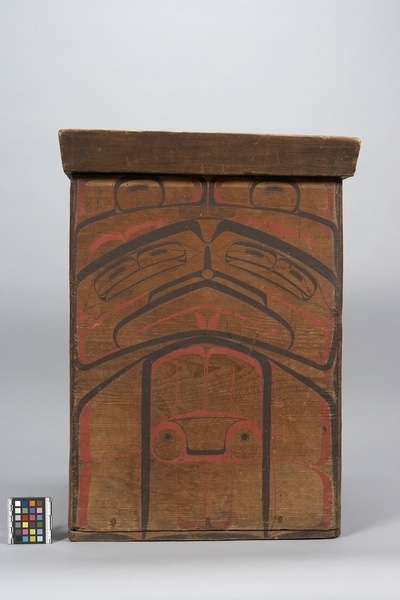
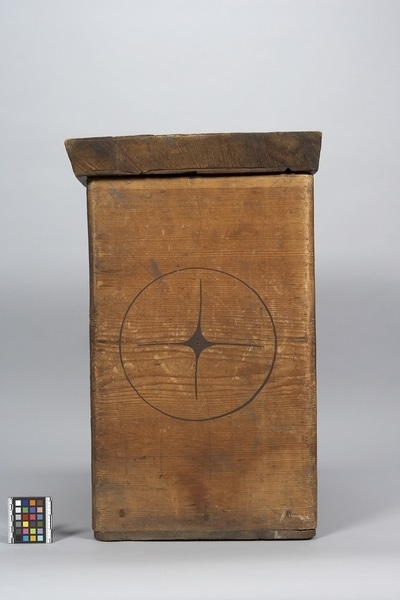
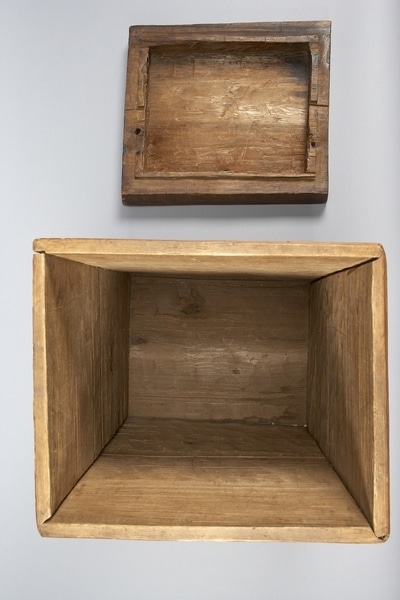
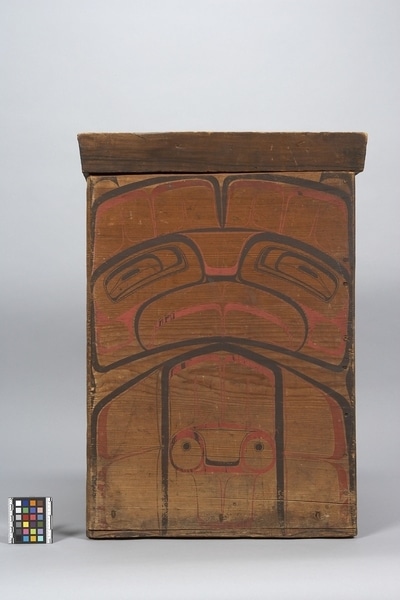
Description
Tall square bentwood box (part a) with a slightly flared lid (part b). The front and back are painted red and black in different distributive Northwest Coast stylized designs. The sides display a large black circle with a four pointed design inside. The joined corner is held together with wooden pegs.
History Of Use
Bentwood boxes were used primarily for storage of food, implements, clothing and valuables. They were also used for cooking and serving food. A well-made bentwood box is watertight, so plain cooking boxes could be used to steam or boil food by adding water and heated stones. They sometimes served as furniture or room dividers. They were also used as trade goods or gifts, and were symbols of wealth and prestige. Boxes used for ceremonial purposes were usually more highly decorated than those for everyday use. Visible on this box is a bright-red trade pigment, vermilion. It was likely introduced to coastal peoples in the late 1700s or early 1800s, when fur traders returned from China with goods to trade for sea-otter pelts.
Cultural Context
storage; trade; status; ceremony
Specific Techniques
Bentwood, or kerfed-corner, containers are constructed by a process unique to the Northwest Coast Aboriginal peoples. The carver begins with a single straight-grained plank of red cedar, or sometimes yellow cedar, spruce, or yew. The surface of the plank is finished with chisels, adzes, and knives; in earlier times, it was smoothed further with sandstone or dried sharkskin. Then three parallel kerfs, or grooves, are carved out at measured points across the width of the board, at right angles to the long edge. The kerfs, which will become three corners of the box, allow the board to be steamed until the wood fibres are softened, and then carefully bent to form a box with symmetrical sides. The final corner, as well as a fitted base, are joined and fastened with pegs (through drilled holes) or laced with spruce root or twisted cedar withes (branches). Storage boxes also have fitted lids of cedar, hollowed from the inside. Finally, painted compositions may be applied to the completed box and shallow carving added to bring the forms into relief.
Narrative
Collected in Port Simpson, but painted in a Heiltsuk style.
Item History
- Made in British Columbia, Canada during 1880
- Collected in Port Simpson, British Columbia, Canada and Lax Kw'alaams, British Columbia, Canada between 1887 and 1966
- Owned by Agnes Macintosh Brentzen
- Owned by Margaret E. Cornish and E. Percival before January 18, 1988
- Received from Margaret E. Cornish (Seller), Museum of Anthropology Shop Volunteers (Funding source) and E. Percival (Seller) on January 18, 1988
What
Who
- Culture
- Tsimshian ? or Heiltsuk ?
- Previous Owner
- Agnes Macintosh Brentzen, Margaret E. Cornish and E. Percival
- Received from
- Margaret E. Cornish (Seller), Museum of Anthropology Shop Volunteers (Funding source) and E. Percival (Seller)
Where
- Holding Institution
- MOA: University of British Columbia
- Made in
- British Columbia, Canada
- Collected in
- Port Simpson, British Columbia, Canada and Lax Kw'alaams, British Columbia, Canada
When
- Creation Date
- during 1880
- Collection Date
- between 1887 and 1966
- Ownership Date
- before January 18, 1988
- Acquisition Date
- on January 18, 1988
Other
- Condition
- good
- Accession Number
- 1283/0001 a-b